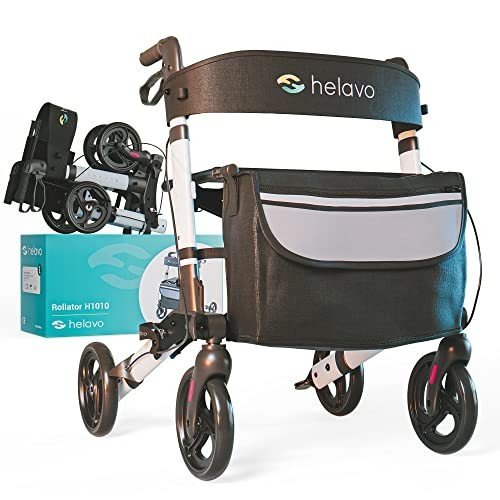walking-frame3655
walking-frame3655
What’s The Job Market For Walking Frame Professionals?
Understanding Walking Frames: Features, Benefits, and Considerations
Walking frames, also referred to as walkers, are important mobility aids created to supply stability and support for people who may fight with balance, coordination, or strength when moving. These devices can considerably boost the lifestyle for the elderly, individuals recovering from surgical treatment, and those with persistent health conditions impacting mobility. This short article will explore the different types of walking frames, their benefits, proper usage, and crucial considerations for users and caretakers.

Types of Walking Frames
Walking frames come in a number of variations to accommodate different user needs. The main types consist of:
-
Standard Walking Frames: These are fundamental freestanding frames that supply maximum stability. Users must raise the frame with each step, making them ideal for people with excellent upper body strength.
-
Two-Wheeled Walkers: These frames have 2 front wheels, permitting for smoother movement. They are ideal for users who can manage some weight-bearing and require less lifting.
-
Four-Wheeled Walkers (Rollators): Designed with 4 wheels, a seat, and hand brakes, rollators provide convenience and safety. Users can stroll without raising the frame, making them appropriate for those with limited endurance or strength.
-
Knee Walkers: These are designed for individuals recovering from foot or ankle injuries. Users rest their knee on a cushioned cushion while pushing themselves forward with their other leg.
Table 1: Comparison of Walking Frame Types
| Walking Frame Type | Main Features | Best Suited For |
|---|---|---|
| Basic Walking Frame | No wheels; needs lifting | Users with good upper body strength |
| Two-Wheeled Walker | Front wheels; much easier maneuvering | Users needing moderate assistance |
| Four-Wheeled Walker | Wheels, seat, brakes | Users needing stability and rest options |
| Knee Walker | Padded knee rest; mobile | Users with lower leg injuries |
Benefits of Using Walking Frames
Walking frames provide various advantages that enhance mobility and promote self-reliance. These benefits include:
-
Increased Stability: Walking frames offer a stable platform, minimizing the risk of falls.
-
Enhanced Confidence: By using assistance, users can feel more safe and secure while walking, which boosts their confidence in mobility.
-
Flexible Use: Walking frames can be used inside and outdoors, accommodating numerous surfaces and environments.
-
Reduced Physical Strain: They ease the physical problem on the user’s legs and back, allowing individuals with pain or weak point to stroll longer distances.
-
Encouragement of Physical Activity: Regular use can promote mobility and help preserve physical activity, which is vital for general health.
Key Considerations for Users and Caregivers
While walking frames use substantial advantages, there are numerous crucial factors to consider to guarantee ideal use:
-
Proper Fit: Walking frames must be adapted to the right height for the user. When standing directly, the elbows ought to be slightly bent when holding the manages.
-
Weight Capacity: Each walker has a maximum weight limitation. Users must guarantee they select a walking frame that can effectively support their weight.
-
Surface Suitability: Users ought to consider where they will primarily use the walker. Four-wheeled walkers are much better suited for outdoor use on irregular surfaces.
-
Maintenance: Regular checks on brakes, wheels, and structural integrity are needed to guarantee safety.
-
User Training: Proper training from healthcare specialists can help users and caregivers comprehend how to use walking frames safely and efficiently.
Frequently Asked Questions about Walking Frames
-
Who can take advantage of utilizing a walking frame?
- People with balance issues, elderly people, those recovering from surgery, and those with persistent mobility problems can take advantage of utilizing walking frames.
-
Can walking frames be used outdoors?
- Yes, many walking frames, especially four-wheeled walkers, are designed for both indoor and outdoor use.
-
How do I pick the right walking frame?
- Consider your mobility needs, environment, weight capability, and any additional features like seats or storage compartments.
-
What should I do if I feel unstable utilizing a walking frame?
- Talk to a healthcare expert or physical therapist for assistance on proper use and change of the walking frame.
-
Are there any dangers connected with utilizing a walking frame?
- If not utilized properly, walking frames may result in falls. It’s vital to ensure appropriate fit, adjust them appropriately, and practice safe walking techniques.
Walking frames represent a valuable tool for increasing mobility and self-reliance for lots of individuals dealing with physical difficulties. By comprehending the different types available, their benefits, and the considerations involved in their use, users and caregivers can make educated decisions about selecting and using the ideal walking frame. With the best support, numerous individuals can restore confidence in their mobility, improve their quality of life, and take necessary steps toward independence.



